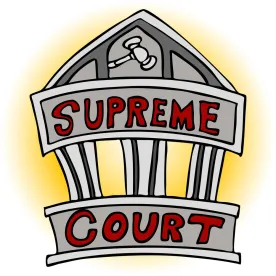Product liability defendants often seek to remove cases to federal court. That’s because federal jurisdiction provides the federal pleading standards, robust expert discovery, efficiency through uniform procedural and evidentiary rules, and often more diverse jury pools. Sometimes defendants can use removal to leverage early case resolution.
But it’s not always clear when a defendant can remove to federal court because the rules vary among the circuit courts, the facts drive the decision, and the case law continues to develop. This year several cases highlighted the evolving removal landscape and addressed four important questions. We take a closer look at each of these questions below.
1. When does the 30-day deadline to remove begin to run if the defendant learns the factual basis for removal during discovery?
Defendants can remove cases to federal court when the U.S. District Court would have had original, subject matter jurisdiction based on the criteria described by 28 U.S.C. § 1441, et seq. But sometimes a complaint does not reveal facts that a defendant may use as a basis to remove. In those cases, 28 U.S.C. §1446(b)(3) allows a defendant to remove within 30 days after the defendant receives “other paper from which it may first be ascertained that the case is one which is or has become removable.” So, what is “other paper”?
In Morgan v. Huntington Ingalls, Inc., the Fifth Circuit is considering when the 30-day clock begins to run if a defendant learns the basis for removal during a deposition: is it the deposition date or the transcript delivery date? The district court had remanded the case to state court after deciding that removal was untimely when it occurred more than 30 days after the deposition date but less than 30 days after the defendant received the transcript.
The Fifth Circuit will now join the Tenth Circuit in deciding this issue. In 1999, that court held in Huffman v. Saul Holdings Ltd. Partnership that the deadline was 30 days after the deposition date. No other Circuit has addressed the issue since then. Huffman reasoned that the clock runs from deposition date because when the defendant receives the transcript “may…be subject to manipulation.”
The better practice is clear: if a deposition reveals facts justifying removal, it’s safest to remove within 30 days after the actual testimony. The Fifth Circuit held oral argument in Morgan on November 8, 2017.
2. What cases may be removed under the Federal Officer Removal statute following a 2011 amendment?
Federal courts also have jurisdiction under the Federal Officer Removal statute (28 U.S.C. §1442) when a federal officer or agency directed the defendant’s actions. Although this statute allows removal in product liability cases when the defendant manufactured the product to a federal agency’s specifications, the standard for removal and corresponding case law has evolved recently following a 2011 amendment to the statute.
Generally, a defendant must show three things to remove: (1) the defendant acted under the direction of a federal officer or agency; (2) the defendant has a colorable federal defense (like immunity); and (3) a causal nexus exists between the federal directive and the conduct at issue in the lawsuit.
Courts continue to grapple with the 2011 amendment to the statute that broadened the third prong of this test – the connection between the contractor’s conduct and official federal authority. Under the old version of the statute, a federal contractor had to prove that the lawsuit had been filed against it “for a[n] act under color of office.” In 2011, Congress expanded 28 U.S.C. §1442 to allow removal for conduct “for or relating to any act under color of office.” Following this change, courts have begun to construe the statute more broadly and allow removal based on a looser “connection or association” between the act in question and the federal office.
In June, the Fourth Circuit reversed a district court remand order in Sawyer v. Foster Wheeler LLC, holding that the federal court had jurisdiction in a case against a boiler manufacturer for the U.S. Navy that provided warnings subject to Navy specifications. The plaintiff alleged that he was exposed to asbestos when he assembled the boilers aboard Navy ships. The court held that the “relating to” language allowed removal because the Navy was aware of dangers of asbestos, required asbestos for the boilers, and provided an extensive (though not exhaustive) list of warnings for the manufacturer to use. Because the manufacturer gave the warnings required by the Navy, there was a causal nexus to remove based on plaintiff’s failure to warn claims.
Defendants should look for opportunities to remove under the amended statute based on links between the conduct that allegedly caused the harm and the federal authority related to that conduct.
3. How can defendants defeat a motion for remand based on fraudulent joinder?
Fraudulent joinder remains a tough basis for removal. Defendants can remove if they prove that plaintiff named a party solely to defeat diversity jurisdiction. But to do that, defendant must show that plaintiff has no viable cause of action against the non-diverse defendant in state court. This is a high bar, particularly before discovery.
Defendants recently lost their removal effort in an ongoing talc case, McBride v. Johnson & Johnson. There, the MDL court in the District of New Jersey granted remand despite defendants’ arguments that plaintiff named two local, Louisiana retailers solely to defeat diversity. Plaintiff alleged that she bought talcum powder from the two retailers in Louisiana and that one, a local affiliate of a national chain, repackaged and sold J&J talcum powder as a private label product. The court held that the retailer qualified as a manufacturer under the Louisiana Product Liability Act—the applicable law—because it repackaged and sold the powder as its own. Plaintiff’s viable cause of action against the Louisiana retailer defeated removal.
4. When is a case a “mass action” removable under the Class Action Fairness Act?
The Class Action Fairness Act of 2005 (“CAFA”) allows defendants to remove “mass actions” to federal court when the “monetary relief claims of 100 or more persons are proposed to be tried jointly on the ground that the plaintiffs’ claims involve common questions of law or fact.” 28 U.S.C. § 1332(d)(11)(B)(i) (emphasis added). Plaintiffs generally can avoid removal by filing several cases, each with fewer than 100 plaintiffs, so long as they do not propose a “joint trial” of all claims. But what exactly is a “joint trial”? Plaintiffs have tried a variety of techniques to avoid federal jurisdiction, with mixed results.
The U.S. Supreme Court recently denied cert. in a case where the plaintiffs succeeded in getting a remand to state court by asking for consolidation of eight product liability suits for pretrial proceedings and creation of a “bellwether-trial process.” The eight lawsuits, Cordis Corporation v. Dunson, et al., involved one of the company’s medical devices. The Ninth Circuit held that remand was proper, because the results of the proposed bellwether trials would not bind other plaintiffs, and therefore would not be a joint trial of all their claims. But the fact that the defendant could be bound by the results of the bellwether trials (“under ordinary principles of issue preclusion”) was irrelevant. Following the cert. denial, the Ninth Circuit decision upholding the district court’s remand of the cases to state court will stand.
So what’s on the horizon for 2018? Courts will likely see disputes related to federal officer removal, esoteric timing issues, and fraudulent joinder based on novel factual circumstances or local law. Defense counsel must think strategically about when and how a case can be removed.



 />i
/>i
